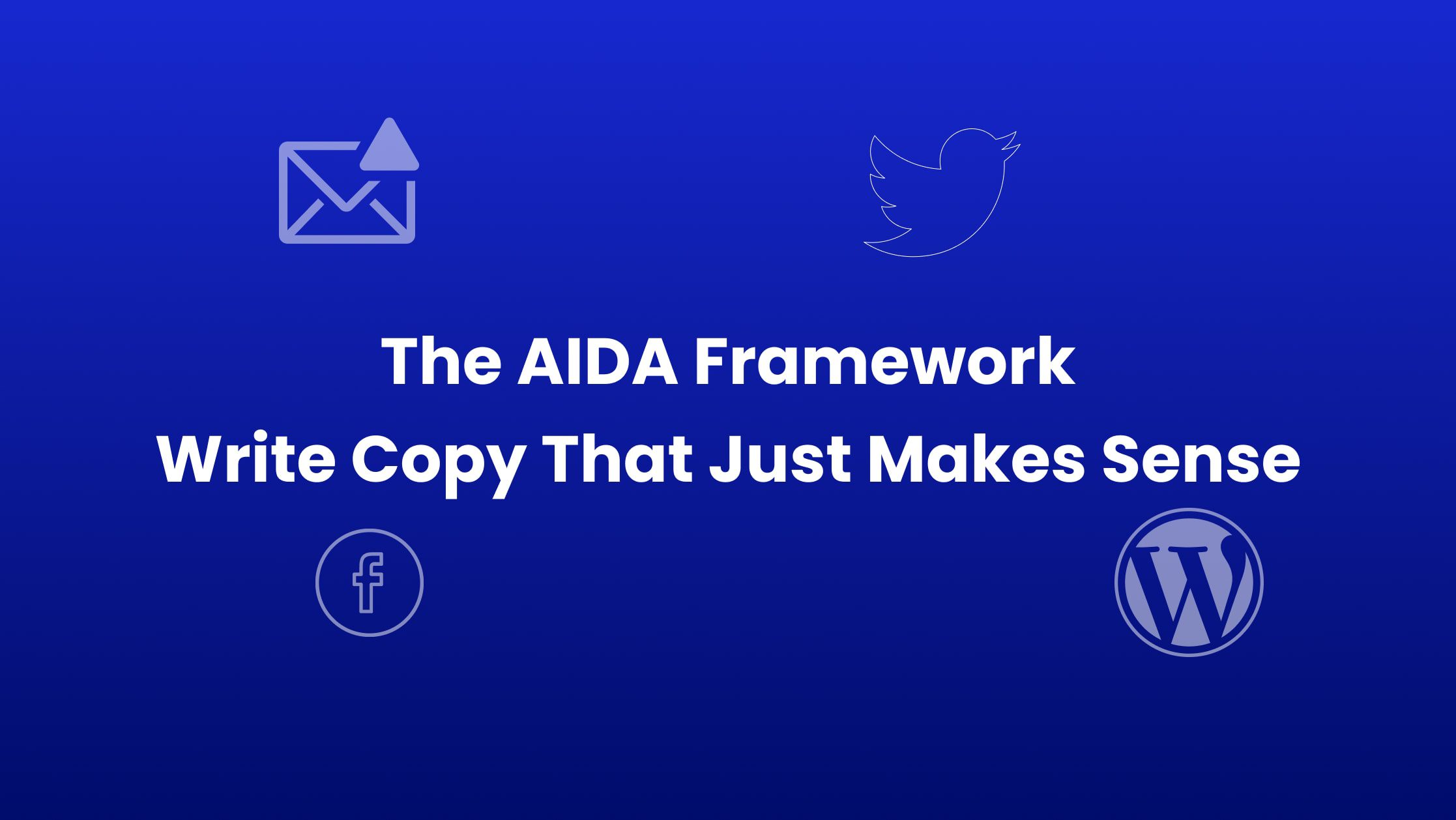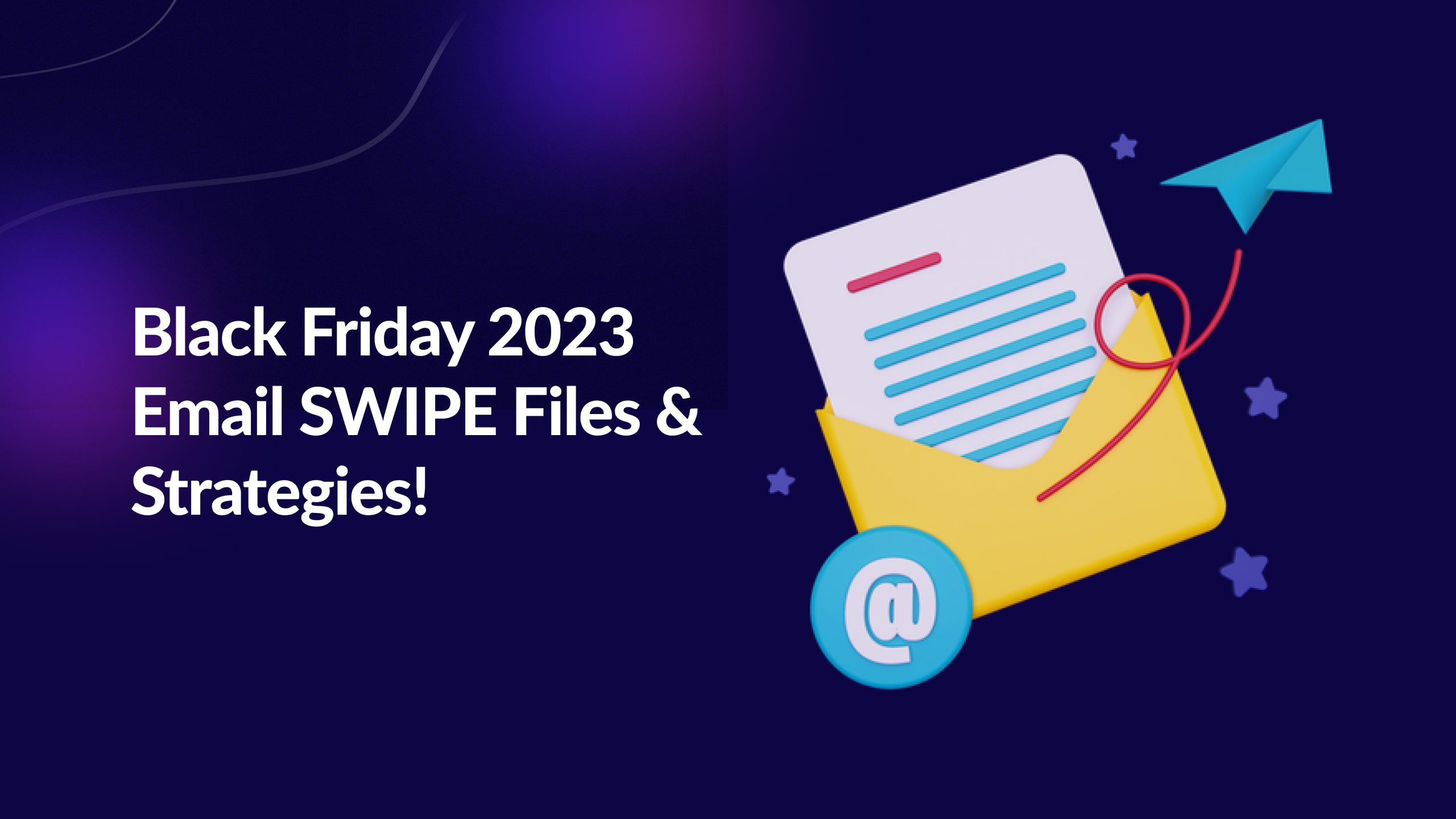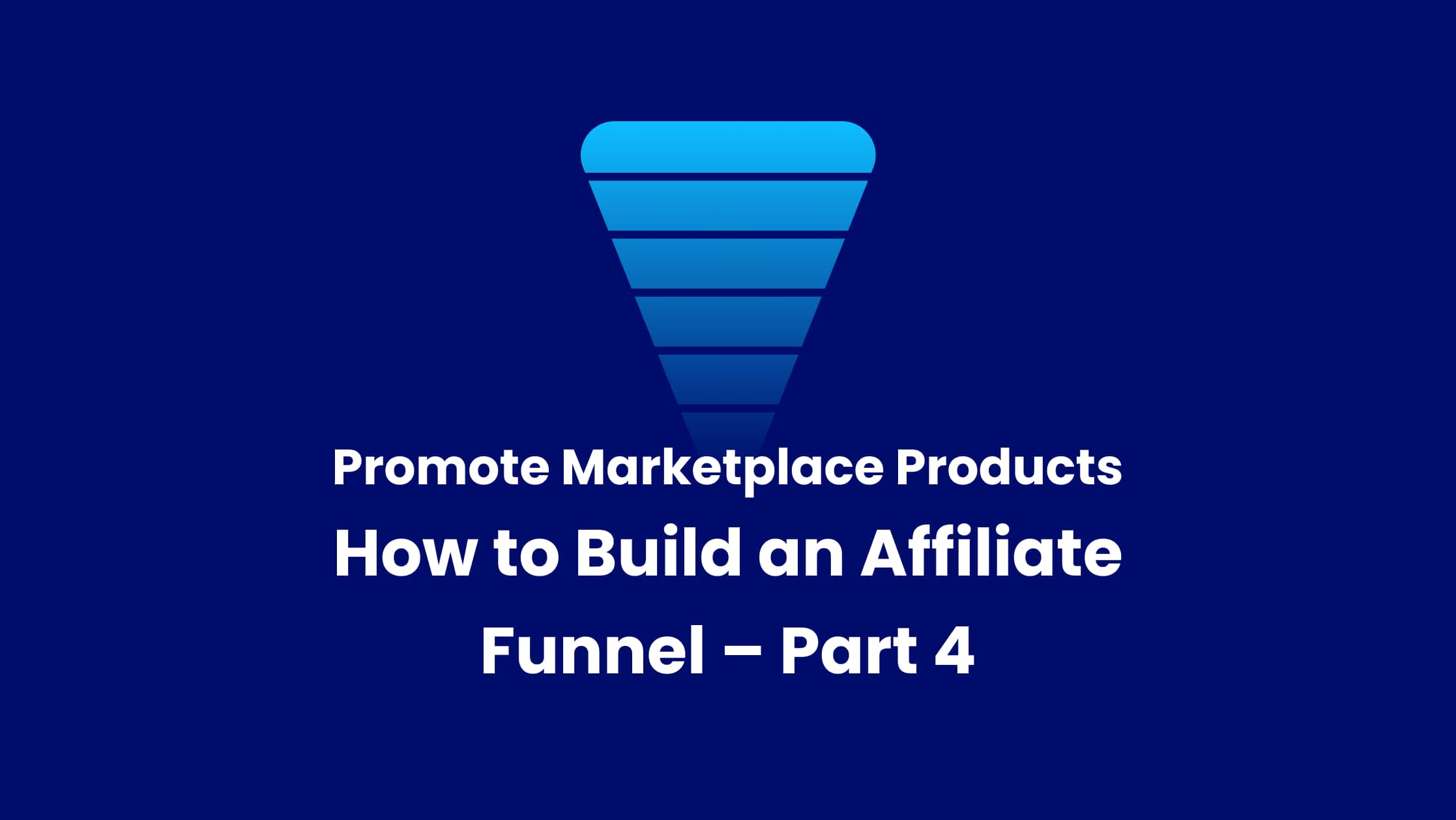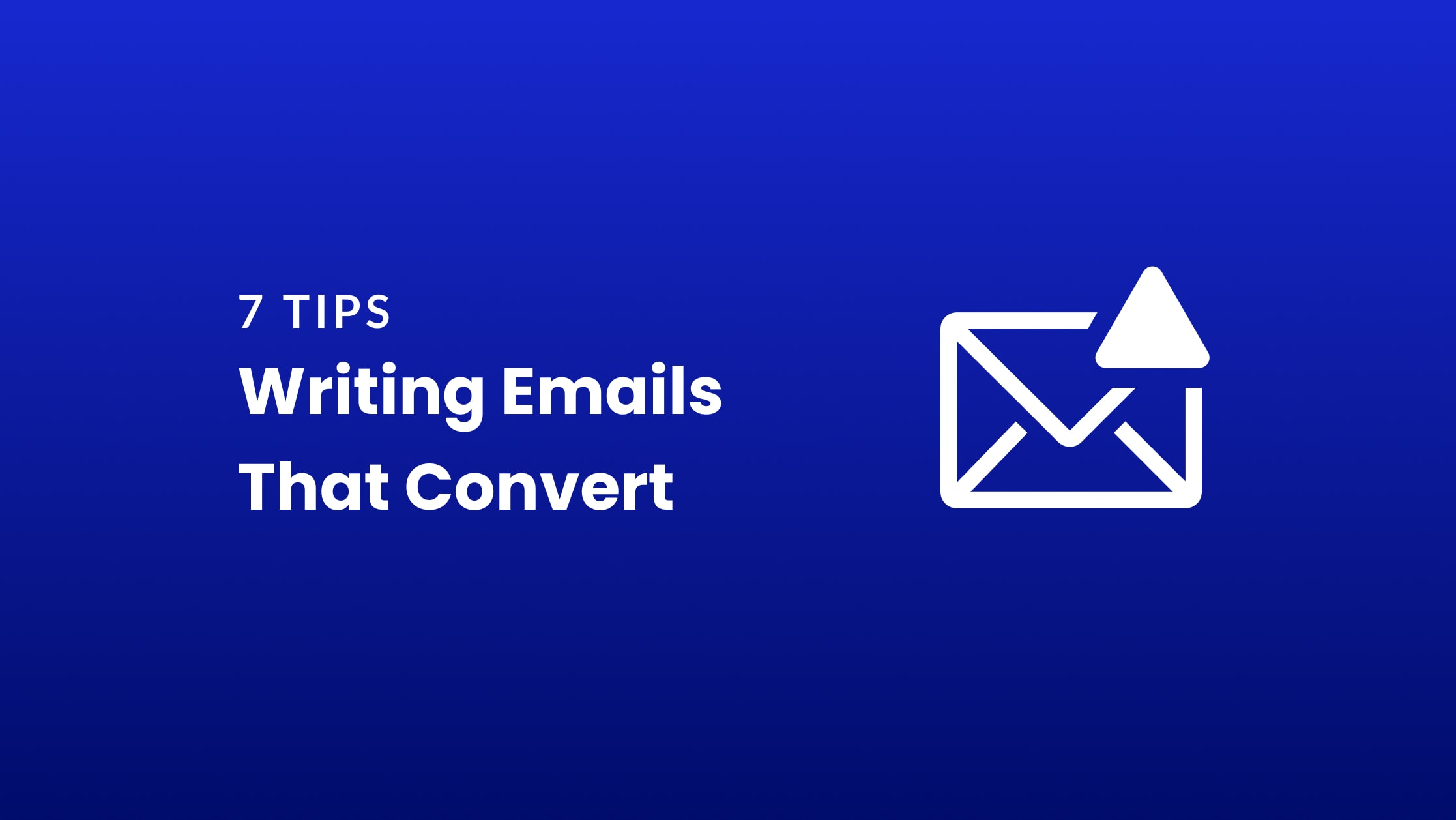In this post, I’ll show you how to write copy that just makes sense using the AIDA framework. If you’re not familiar with copywriting, then it’s one of the most important aspects of any marketing campaign. It’s any text content such as a blog post, an ad description, or even text on an image.
If your copy isn’t engaging and effective, you will not be able to convert website visitors into customers.
In this blog post, we will discuss the AIDA copywriting framework and how to use it to create more effective content.
To make the most out of this post, make sure you have your audience/customer avatar near you so you can brainstorm content ideas for the audience you’re going after.
What is the AIDA copywriting framework?
AIDA is an acronym that stands for Attention, Interest, Desire, and Action. Using this framework, you can structure your content to engage and motivate your reader to take action.
Here’s a more detailed breakdown of each stage of the AIDA framework:
Attention: The first step is to get the reader’s attention. You can do this by using an attention-grabbing headline and opening sentence. You can do this by using an eye-catching headline and images that are relevant to the product.
This makes them curious about the rest of your content and willing to read further.
Interest: Once you have the reader’s attention, you need to make them interested in what you have to say. To do so, your content needs to be persuasive and engaging. It should talk about the “why” behind the solution you’re providing to them.
Desire: The next step is to create a desire for the solution you’re providing. This can be done by highlighting the benefits of what you have to offer and showing them how it can solve their problem.
The best thing you can do in this stage is to focus on making them trust you. By doing so, you’ll move them from being interested in the solution you’re providing to wanting it.
Action: Finally, you need to motivate the reader to take action by using a strong call-to-action (CTA).
How To Use the AIDA Framework as an Affiliate
To get started using the AIDA framework, and specifically in the context of being an Elegant Themes affiliate, you’d start by defining a specific end goal you want to get from the marketing message they’ll be seeing.
Your goal could be anything from joining your email list to buying Divi through your affiliate link.
Once your goal is decided, you’d look at the specific avatar/persona you’re talking to, and you’d start by writing down the 4 different sections of the AIDA framework as headings for you to use as references when writing:
- Attention
- Interest
- Desire
- Action
Step 1 – Grab Your Reader’s Attention
To grab the attention of someone, you could ask them a question or a powerful hook. Identify what problem they are trying to solve or what need they are trying to fill, and then craft your headline around that problem.
For example, your attention heading could be: “Are your landing pages converting at 70%?” or “Are your optin pages getting 65% conversion rates?“
To a marketer, a 70% conversion rate is simply insane, and you’d have their attention at this point.
PS: I exaggerated the headline slightly to show you the point I’m trying to make, but the same concept could be authentically applied to anything.
Step 2 – Pique Interest
Next, you’d want to pique their interest. Just because you have their attention doesn’t mean they’re interested in what you’re talking about. To do so, you could talk about facts related to your headline.
For example, you could say, “Using Divi’s built-in split-test feature, we were able to run not 1, not 10, not 100, but 218 split tests all over our website in just 3 days, which resulted in our website converting 70% more visitors than before”.
To an avatar that loves data and analytics-backed marketing, this would be very interesting.
Step 3: Create Desire
The next step would be to make them desire the solution you’re providing, which in our case Divi. To do so, focus on benefits to them.
So for the desire section, you could say, “Imagine having the power to split-test everything on your website from your navigation menu to your footer. Imagine being able to optimize every single element on your website, from colors and buttons to headlines. Better yet, imagine being able to split test blog post titles to find the perfect title for each and every blog post.”
I like to use to word imagine because it stimulates a visual image in readers, but you don’t have to stick to this format.
Step 4: Drive Action
A strong call to action (CTA) is the key to getting readers to take the next step in your marketing funnel. Without it, you’ll lose out on potential conversions and sales. So how do you write a CTA that’s impossible to resist? Here are four tips:
1. Make it relevant to your audience. Your CTA should be relevant to what the reader is trying to accomplish. If they’re not interested in what you have to offer, they won’t take the time to read any further.
2. Use strong language that speaks directly to their needs and desires. For example, “Get Started Now” or “Download for Free.”
3. Keep it short and sweet. You don’t want your CTA taking up too much space or competing with your headline for attention. Try keeping it between 2-4 words long.
4. Test different variations until you find one that works best for you and your audience. Not all CTAs will work the same for everyone, so it’s important to experiment until you find one that converts the best.
When using the AIDA framework, it’s important to remember your ultimate goal. What do you want your reader to do? Whether you want people to join your email list, buy a product, or simply subscribe to your blog, make sure your content is designed to lead them there and has a strong CTA.
If you focus on creating engaging and effective content using the AIDA framework, you’ll be well on your way to reaching your goals.
When you’re done writing all the sections and satisfied with your copy, remove the headings (Attention, Interest, Desire, and Action), your copy will flow like the following:
Are your landing pages converting at 70%?
Using Divi’s built-in split-test feature, we ran not 1, not 10, not 100, but 218 split tests all over our website in just 3 days, which resulted in our website converting 70% more visitors than before.
Imagine having the power to split-test everything on your website, from your navigation menu to your footer. Imagine being able to optimize every single element on your website, from colors and buttons to entire page sections. Better yet, imagine being able to split-test blog post titles to find the perfect title for each and every blog post to maximize your click-through rates.
Click Here to Learn More.
What Are What Best Use Cases for the AIDA Framework
You can use the AIDA framework for anything you want to use it for. However, I find it most effective for 2 things:
- Writing Ad copy
- Email marketing
The AIDA framework is simple. You grab the attention, increase interest, create desire and finally drive action. This is great if you’re talking about something simple or something that doesn’t require much convincing or, in marketing terms, single-level communication.
If you’re selling an actual product, using the AIDA framework might be a little hard because a lot goes into selling a product or convincing someone to pay for something.
If you want to write content for landing pages or sales letters, I recommend you read our post on the PAS framework instead.
As you can see, the AIDA framework is a powerful tool that can help you create more effective content. If you’re not using this framework, I encourage you to give it a try on your emails, ads, and landing pages, and you’ll see an improvement in your conversion rate.






